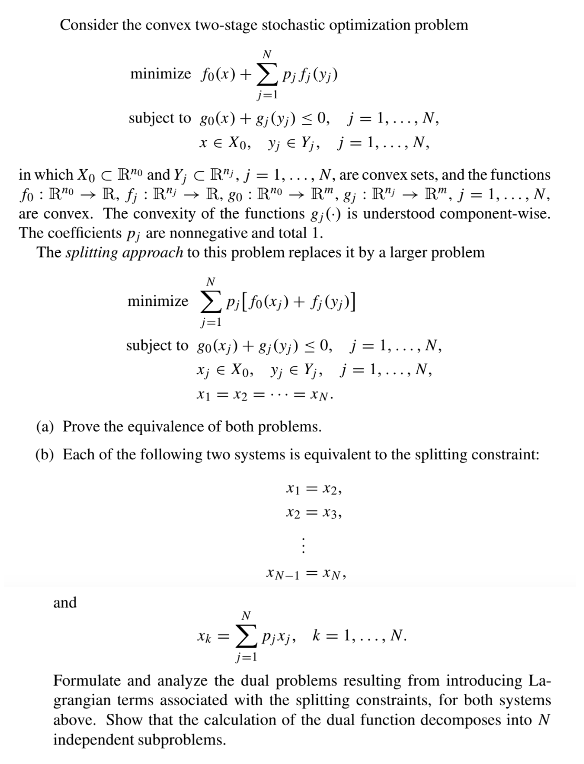Answered step by step
Verified Expert Solution
Question
1 Approved Answer
Consider the convex two-stage stochastic optimization problem N minimize fo(x) + p; fj(y;) j=1 subject to go(x)+gj(y;) 0, j = 1, . . .,

Consider the convex two-stage stochastic optimization problem N minimize fo(x) + p; fj(y;) j=1 subject to go(x)+gj(y;) 0, j = 1, . . ., N, x Xo, yj Yj, j = 1,...,N, in which Xo CR and Y; CR", j = 1,..., N, are convex sets, and the functions fo: RR, f; RR, go: Ro R", g : Rj R", j = 1,..., N, are convex. The convexity of the functions g;(-) is understood component-wise. The coefficients p; are nonnegative and total 1. The splitting approach to this problem replaces it by a larger problem minimize P[fo(xj) + fj(yj)] j=1 subject to go (x;)+g;(y;) 0, j = 1,..., N, xj Xo, yj Yj, j = 1,..., N, x1 = x2 == XN. (a) Prove the equivalence of both problems. (b) Each of the following two systems is equivalent to the splitting constraint: x1 = x2, x2 = X3, and XN-1 = XN, N x = EPXj, k=1,...,N. j=1 Formulate and analyze the dual problems resulting from introducing La- grangian terms associated with the splitting constraints, for both systems above. Show that the calculation of the dual function decomposes into N independent subproblems.
Step by Step Solution
There are 3 Steps involved in it
Step: 1

Get Instant Access to Expert-Tailored Solutions
See step-by-step solutions with expert insights and AI powered tools for academic success
Step: 2

Step: 3

Ace Your Homework with AI
Get the answers you need in no time with our AI-driven, step-by-step assistance
Get Started


